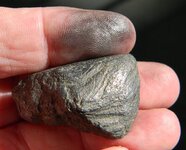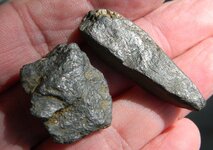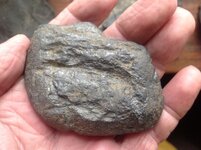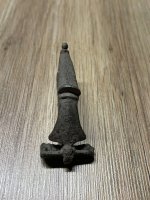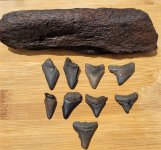monsterrack
Silver Member
- Apr 15, 2013
- 4,419
- 5,815
- Detector(s) used
- Garrett, and Whites
- Primary Interest:
- All Treasure Hunting
Webster defines artifact as (any object made by human work or skill) Now with that being said we all know we are talking about Native American items. 1st would you go deer hunting if you were unsure of what a deer looked like and the answer is no (I hope) Lol. !!!! When I fist got started I brought home more rocks than you would believe and still have some of them. I still pick up nice rocks or ones that look different. Then I started reading and looking at any photo of artifacts I could find(so I would know my target).
We don't know it all about the life style of the NA but we do know a good bit. Most NA didn't have time to make real nice stuff because they were hunter gathers. Meaning where the food was they were there also so they made some crude tools, but you can tell it is a tool by shape and wear pattern. So all items like an axe, hoe, celt,and gouge have a bit to them, just like the tools we use today. All items like hammer stone, maul, pestel, motar, net weight, atlatal weight, plummet all had wear pattern and a certain look. I'm not saying all artifacts will look alike but you will be able to see with out a doubt what it is.
Now did they just have round rocks laying around that fit in their hand(yes). What would be a better defense than a wall of rocks being thrown at a intruder or wild animal. They could be used to cook or boil water with, but just because a rock fits your hand does not make it an artifact and just because it was found on a site does not make it an artifact unless it has been altered by human work or skill. If you want to collect every rock you find on a site then you will have a good rock garden.
Then the time came that they did not have to be hunter gathers and became farmers, tradesmen, artist and skilled stone workers. This is when you will see effigy's and super fine pipes an other works of art. A effigy does not have to be turned a certain way or held just right to get the view you see. When you pick it up you will know it is an effigy. Most of all read, find you a hunting buddy and put some miles on the ground. Study your target and you will hit the bulls eye.
We don't know it all about the life style of the NA but we do know a good bit. Most NA didn't have time to make real nice stuff because they were hunter gathers. Meaning where the food was they were there also so they made some crude tools, but you can tell it is a tool by shape and wear pattern. So all items like an axe, hoe, celt,and gouge have a bit to them, just like the tools we use today. All items like hammer stone, maul, pestel, motar, net weight, atlatal weight, plummet all had wear pattern and a certain look. I'm not saying all artifacts will look alike but you will be able to see with out a doubt what it is.
Now did they just have round rocks laying around that fit in their hand(yes). What would be a better defense than a wall of rocks being thrown at a intruder or wild animal. They could be used to cook or boil water with, but just because a rock fits your hand does not make it an artifact and just because it was found on a site does not make it an artifact unless it has been altered by human work or skill. If you want to collect every rock you find on a site then you will have a good rock garden.
Then the time came that they did not have to be hunter gathers and became farmers, tradesmen, artist and skilled stone workers. This is when you will see effigy's and super fine pipes an other works of art. A effigy does not have to be turned a certain way or held just right to get the view you see. When you pick it up you will know it is an effigy. Most of all read, find you a hunting buddy and put some miles on the ground. Study your target and you will hit the bulls eye.
Amazon Forum Fav 👍
Upvote
0



